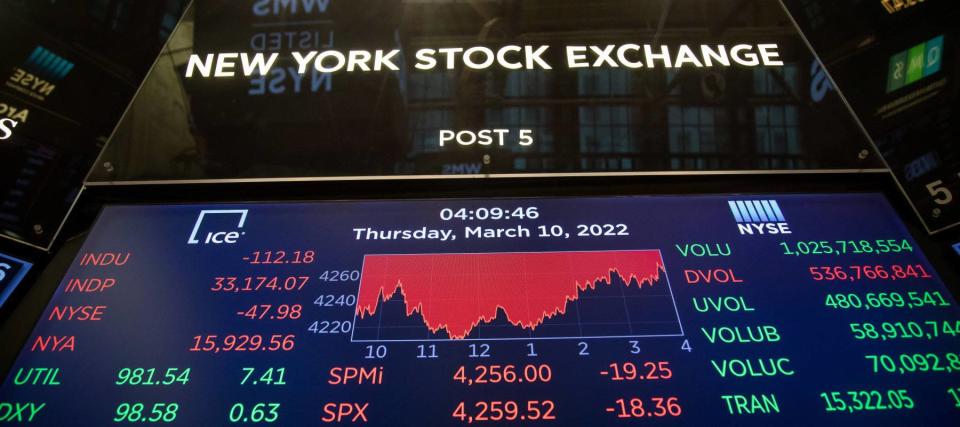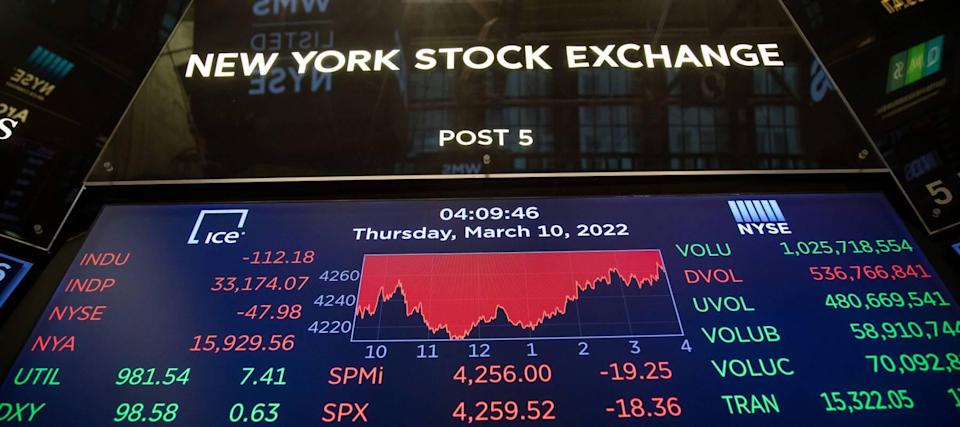
Sharp fluctuations this year in stocks and in the top measure of market risk present an opportunity to examine an investing concept that may provide some assurance: the low-volatility anomaly.
The anomaly is pretty straightforward: Investment researchers find that over time, higher risk doesn’t necessarily translate into higher returns.
“With the low-volatility anomaly, what we’ve observed is that sometimes stocks with lower volatility can keep up and sometimes even outperform stocks with higher volatility over a longer period of time,” says Veronica Willis, investment strategy analyst at Wells Fargo Investment Institute. The anomaly is based on about 90 years of market research.
This concept, of course, helps underpin the universal investing advice to diversify your portfolio and plan your investments for the long term, including assets that provide steady income and don’t rise and fall abruptly with the stock market — think bonds, real estate, stocks with reliable dividends, and goods that people need even during a crisis.
To better understand the low-volatility anomaly and its significance for rocky periods in the market, let’s start with a recap on how much risk investors saw this year for the market’s near-term returns.
The CBOE Volatility Index, known as the VIX for its stock symbol, hit a 52-week high of 39 this March. Fears about market weakness shot up in late winter as stocks zagged down in reaction to the latest news developments, including the war in Ukraine, scorching inflation and federal monetary policy restraints.
The “fear gauge,” maintained by CBOE Global Markets, has since dipped into the high teens and is back up to about 34. Those factors continue to contribute to market volatility, along with worries about another potential COVID-19 surge this spring, as seen in Europe and China.
How to take advantage of the low-volatility anomaly
During market corrections, expert advisors like Willis remind people to keep the low-volatility anomaly in mind. Less volatile stocks don’t fall as violently as stocks with higher volatility. While they don’t make as many exciting one-day jumps, low-volatility stocks can provide steadier gains over time.
“Investors can treat stocks like the lottery and look for more volatile stocks, and they can overpay for those stocks which leads to them being overvalued and can lead them to decline,” Willis says.
But market participants are human, and humans don’t always act rationally — especially when it comes to decisions about money. Investors are therefore prone to making mistakes.
Investors often overvalue volatile growth stocks in hopes that they’ll be the “next big thing.”
“Investors look at other stocks in the past that were high earners, and so they look for another stock that they think could be a high earner,” Willis said. “This can lead them to decline, not grow.”
More uncertainty ahead
This anomaly is especially important for investors to consider right now. Even as the stock market returns to some semblance of stability, there’s a chance it won’t last long given all of the uncertainty that remains — including unknowns about Federal Reserve policy changes, the future of oil prices, and supply chain disruptions that haven’t cleared as fast as regulators expected.
So what should investors do? Find strong companies with proven track records, and hold them for the long run.
“Right now, we’re looking at quality within the equity space. Large-cap stocks that will have lower volatility than a small-cap stock or international stocks,” Willis said. “We like the sectors that are more focused on quality like information technology and services, and others like financials.”
It’s important to be careful when searching for sectors to invest in.
The tech sector, in particular, is full of small and emerging companies. Instead, investors might want to favor larger companies that are no longer in the early stage of their life cycle.
“A decade or more ago, a lot of those companies within technology were more volatile because they were younger,” Willis said. “Those bigger names within tech are more established companies that tend to be a little bit lower volatility and stable than something new that’s coming on the scene.”
Good examples of mature mega-cap tech stocks include Microsoft, Intel and Cisco Systems. They all have relatively low volatility and offer healthy dividends to boot.
Low volatility and your investing strategy
Willis doesn’t want investors to become scared of investing altogether. For conservative investors looking for steady long-term gains, the low volatility anomaly provides a good basis for a winning strategy.
“What’s really important about the low volatility anomaly that investors should know, is you don’t have to go as far to claw back those returns, so you’re able to grow more consistently.”
While you’re waiting out the high volatility this year, you might want to use some of that time to investigate options that help cushion the impact of inflation without the extreme ups and downs of the market.
This article provides information only and should not be construed as advice. It is provided without warranty of any kind.






